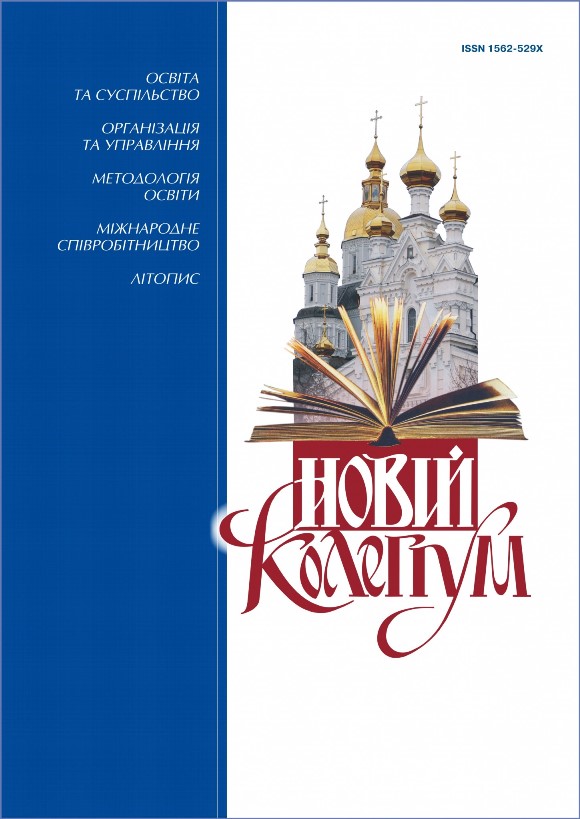H. Skovoroda in the Works of Ukrainian Artists
DOI:
https://doi.org/10.30837/nc.2022.4.14Keywords:
Baroque, M. Boichuk, Hryhoriy Skovoroda, emblematic, symbolism, Kharkiv artists, Ukraine, H.S. Skovoroda Kharkiv National Pedagogical UniversityAbstract
This paper analyzes the creative heritage of H. Skovoroda, his literary pronouncements on the role of art in the cultural heritage of the reference period. Along with dialectics of philosophical thought of H. Skovoroda, an important principle of his work, namely symbolism, which was inherent not only in Baroque emblematic poetry, but also in the visual art in general at the time, is revealed. Philosophical reflections and symbols of H. Skovoroda were understandable and highly sought not only in the Baroque period, but also throughout the time. It is thus with good reason that philosophical and ethical views of H. Skovoroda influenced the artistic conceptions of many Ukrainian artists, first and foremost those belonging to M. Boichuk, H. Narbuta, V. Krychevskyi, O. Bogomazov, K. Malevich and others.
This paper expands the concept of emblematics, symbolism of the Baroque and its quotation in the modern Ukrainian art. It has been brought out that the image symbolism of H. Skovoroda in their creativity expressed the idea of Ukrainian Sacrum, sophistication and cordocentrism. The philosophy of Ukrainian art, based on the idea of Sacrum, as well as on the sacral signatures of the national fine arts, developed its own understanding of both art and artistic concepts that reflected the revolutionary “mythmaking” and transformed the stable Ukrainian archetype into new artistic images.
Skovoroda’s teachings have always attracted artists by their uniqueness, the significance of opinions, the depth of spiritual understanding of both the world and man, while his mystical symbolism is still quoted in the works of Ukrainian artists. Skovoroda’s figure is embedded in the historical process of understanding both the man and the world around, and his views can be projected not only onto the past, but likewise onto the present. In Ukrainian fine art and iconography, the philosopher’s dream of the harmony of human existence, the greatness of his spirit and self-knowledge is still maintained.
The expressed allegorical nature of Skovoroda’s philosophical meditations is reflected in the symbolism of both the past and contemporary works of art. The illustration of a conceptual idea in terms of images-symbols is kind of “l'instant épié”, which aims at the most adequate expression of the artist’s point of view, when reality is transformed by flair, and everything that the artist’s brush touches rises above everyday life and becomes poetic.
References
Аверінцев С. Софія-Логос. Словник. 2-е вид. Київ : Дух і Літера, 2004. 600 с.
Паньок Т. В. Слобожанська ікона ХVІІ – початок ХІХ ст. Харків : ФО-П «Іванова», 2008. 280 с.
Кравченко Я. Школа Михайла Бойчука. Тридцять сім імен. Київ : Майстерня книги, Оранта, 2010. 400 с.
Сковорода Г. С. Твори : в 2-х т. Київ : Обереги, 2005. 2-е вид., виправ. Т. 1. 528 с.
Чижевський Д. Філософія Г. С. Сковороди. Варшава : Праці Українського Наукового Інституту, 1934. Т. 24. 233 с
Чижевський Д. Нариси з історії філософії на Україні. Київ : Вид-во Орій при УКСП Кобза, 1992. 230 с.
Чижевський Д. Філософія Г. С. Сковороди. Харків : Акта, 2003. 431 с.
Чижевский Д. Український літературний барок. Нариси. Харків : Обереги, 2003. 548 с.
Эпштейн, М. Парадоксы новизны: о литературном развитии XIX – XX веков. Москва : Сов. писатель, 1988. 416 с.

